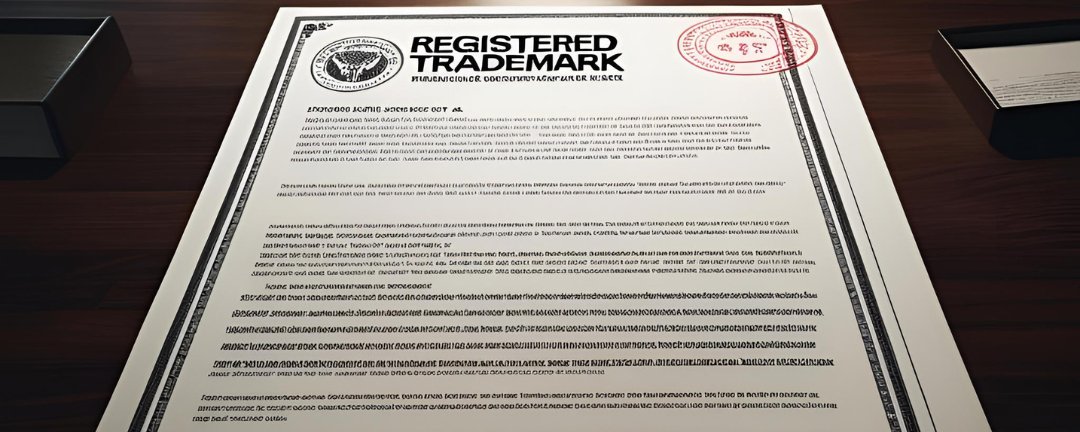Skipping a trademark search may seem like a shortcut when launching a new product or service, but it can backfire spectacularly.
Every week, entrepreneurs across America launch products worth millions in development costs, only to receive cease-and-desist letters months later that could destroy everything they’ve built. What’s the common thread in these business disasters? They all skipped one critical step that takes just days to complete but could save years of legal headaches.
In 2024 alone, trademark disputes have reached record levels, with the USPTO receiving nearly 765,000 trademark applications and enforcement actions resulting in hundreds of millions in damages and settlements.
What Is a Trademark Search?
A trademark search is a comprehensive investigation into existing trademarks to determine whether your proposed mark is already in use or could create consumer confusion. This critical due diligence process involves multiple layers of research:
Federal Database Review: Searching the USPTO’s Trademark Electronic Search System (TESS) for registered and pending federal trademarks that could conflict with your proposed mark.
State Registry Analysis: Checking individual state trademark databases, as state registrations can provide legal rights even without federal protection.
Common-Law Investigation: Reviewing unregistered marks used in commerce, including business names, domain registrations, social media handles, and local directory listings that could establish prior rights.
Domain and Digital Presence Search: Analyzing website registrations, social media platforms, app stores, and online marketplaces where trademark rights can be established through use.
International Considerations: For businesses planning global expansion, searching international trademark databases and understanding territorial protection requirements.
Consequences of Skipping a Trademark Search
The financial and legal consequences of inadequate trademark searching continue to escalate as markets become more saturated and enforcement becomes more aggressive:
Infringement Lawsuits: Companies face lawsuits demanding millions in damages, with average litigation costs ranging from $120,000 to $750,000 according to recent industry data.
Forced Rebranding Costs: Beyond legal fees, companies must absorb the enormous expense of changing packaging, marketing materials, websites, domain names, signage, and inventory—often totaling millions for established brands.
Lost Market Position: Years of brand building, customer loyalty, and market recognition can evaporate overnight when forced to rebrand, allowing competitors to capture market share.
Regulatory Sanctions: The USPTO has increased enforcement actions against fraudulent filings and trademark violations, including monetary penalties and restrictions on future filings.
Big Brands, Bigger Lawsuits
Recent high-profile trademark disputes demonstrate that even major corporations aren’t immune to costly oversights:
Tiffany & Co. v. Costco Wholesale: Costco’s unauthorized use of “Tiffany” to describe diamond ring settings resulted in a devastating $19 million jury verdict, proving that generic usage of famous marks carries enormous financial risks.
Adidas v. Payless ShoeSource: Payless’s sale of shoes featuring three-striped patterns similar to Adidas’s iconic design led to a staggering $305 million settlement, demonstrating how trade dress infringement can result in company-ending penalties.
Penn State University Victory: In 2024’s biggest trademark decision, Penn State successfully defended against counterfeit merchandise sellers, with the court rejecting the “ornamentality” defense and establishing stronger protection for collegiate licensing programs.
Supreme Court Trademark Ruling: The 2025 Dewberry Group v. Dewberry Engineers decision limited profit disgorgement awards to defendants’ own profits, excluding affiliated entities, but still upheld significant damage awards for trademark infringement.
How IP Compliance and USPTO Rules Protect Your Business
Adhering to intellectual property compliance requirements ensures you respect existing rights while maximizing protection for your own brand:
Proper Classification: Accurately identifying the correct international class for your goods or services using the USPTO’s classification system to ensure comprehensive protection.
Distinctiveness Standards: Ensuring your mark meets USPTO requirements for distinctiveness and isn’t merely descriptive of the goods or services offered.
Intent-to-Use Applications: Filing intent-to-use applications when you haven’t yet launched commercially but want to secure priority rights.
Office Action Response: Responding promptly and thoroughly to USPTO Office Actions to avoid application abandonment and maintain your filing date priority.
Updated Fee Structure: The 2025 USPTO fee changes introduced a streamlined $350 base application fee with additional charges for custom descriptions and lengthy identifications, making strategic application drafting more critical than ever.
Steps to Conduct a Thorough Trademark Search
1. Preliminary Online Search
Begin with free searches using major search engines, domain registrars like GoDaddy or Namecheap, and social media platforms to identify obvious conflicts. Check business directories, industry publications, and competitor websites.
2. Professional USPTO Database Search
Utilize the upgraded USPTO search system with its new search builder feature and cloud-based infrastructure. Search for identical marks, phonetic equivalents, and marks with similar commercial impressions across relevant classifications.
3. State and Common-Law Investigation
Review state trademark registries, business entity filings, fictitious name registrations, and local yellow pages or business directories. Analyze trade publications, industry magazines, and regional newspapers for evidence of use.
4. Comprehensive Digital Analysis
Examine domain name registrations, social media handles across all major platforms, mobile app stores, e-commerce marketplaces like Amazon and eBay, and online advertising campaigns that could establish common-law rights.
5. Professional Legal Opinion
Engage an experienced trademark attorney to conduct a professional clearance search and provide a formal legal opinion assessing the risk of confusion, infringement liability, and enforcement challenges.
6. Ongoing Monitoring Program
After filing, implement continuous monitoring of new trademark applications, domain registrations, and marketplace activities using professional watch services to catch potential conflicts early.
Compliance Requirements and Best Practices
Documentation Standards: Maintain detailed records of your search process, findings, and legal analysis to demonstrate good faith efforts in case of future disputes.
International Considerations: For global brands, coordinate searches across all target markets, understanding that trademark rights are territorial and require country-specific analysis.
Regular Updates: Trademark landscapes change rapidly; conduct periodic re-searches before major marketing campaigns or product launches to identify new conflicts.
Internal Protocols: Establish company-wide procedures requiring trademark clearance before any new brand launches, product names, or marketing campaigns.
Recent Regulatory Changes Impacting Searches
The USPTO’s 2024-2025 modernization efforts have enhanced search capabilities with improved user interfaces, better search algorithms, and comprehensive databases. However, these improvements also mean that trademark conflicts are identified more quickly and accurately, increasing the importance of professional searching.
The agency’s crackdown on fraudulent trademark filings has led to enhanced scrutiny of applications, making thorough clearance searches even more critical for legitimate applicants seeking to avoid delays or rejections.
Global Impact and Enforcement Trends
International trademark filing trends show significant growth in key markets, with India approaching U.S. filing volumes and increased enforcement activity worldwide. This global expansion of trademark activity makes comprehensive searching across multiple jurisdictions essential for businesses with international ambitions.
Economic Impact of Trademark Disputes
Industry analysis reveals that trademark disputes have increased in both frequency and severity, with damage awards regularly exceeding eight figures. The rise of e-commerce, social media marketing, and global brand competition has created more opportunities for conflicts while simultaneously raising the stakes for brand protection.
Future Trends and Predictions
Artificial intelligence and machine learning technologies are beginning to transform trademark searching, offering more sophisticated similarity analysis and comprehensive monitoring capabilities. However, human expertise remains essential for interpreting results and assessing legal risks.
FAQ
Q: How long does a comprehensive trademark search take?
A: A professional trademark search typically takes 3-7 business days for domestic searches, with international searches requiring 1-2 weeks depending on the number of countries involved.
Q: What’s the difference between a knockout search and a full clearance search?
A: A knockout search is a preliminary review to identify obvious conflicts, while a full clearance search includes comprehensive analysis of federal, state, and common-law rights with detailed legal analysis.
Q: Can I conduct my own trademark search?
A: While basic online searches are possible, professional searches using specialized databases and legal expertise are recommended for any serious commercial venture due to the complexity of trademark law.
Q: How much does a professional trademark search cost?
A: Professional trademark searches typically range from $500-$2,000 for domestic searches, with international searches costing $1,000-$5,000 depending on scope and countries covered.
Q: What happens if my search shows potential conflicts?
A: Potential conflicts require legal analysis to assess the likelihood of confusion, enforcement risk, and available options such as coexistence agreements, design modifications, or alternative brand selections.
Q: Do I need to search internationally even if I only plan to sell domestically?
A: If there’s any possibility of future international expansion, early international searching can prevent costly conflicts and preserve expansion opportunities.
Q: How often should I update my trademark searches?
A: Conduct updated searches before major product launches, significant marketing campaigns, or international expansion, and maintain ongoing monitoring services for continuous protection.
Q: What’s the impact of the new USPTO fee structure on trademark searches?
A: The 2025 fee changes make careful application drafting more important, as custom descriptions now carry additional fees, emphasizing the need for thorough pre-filing searches and strategic planning.
By investing time and resources in comprehensive trademark searches and complying with USPTO requirements, businesses safeguard their brands, avoid costly litigation, and build lasting market value in an increasingly competitive global marketplace.



